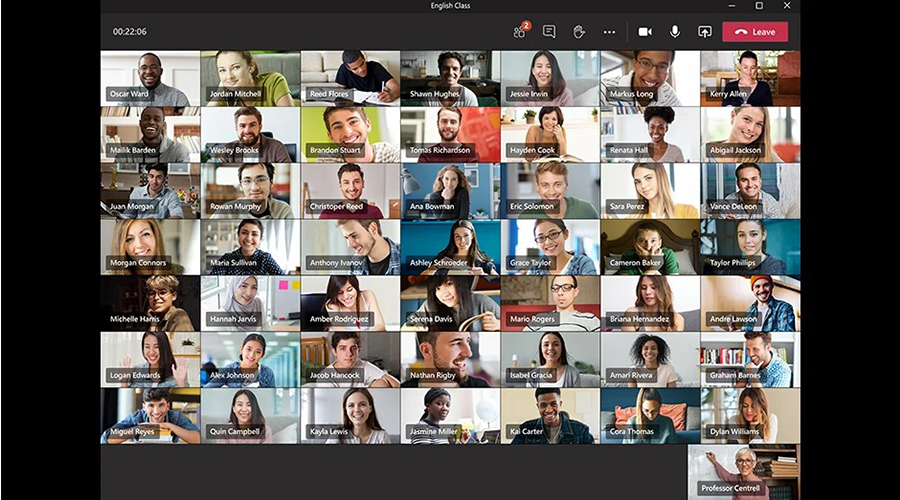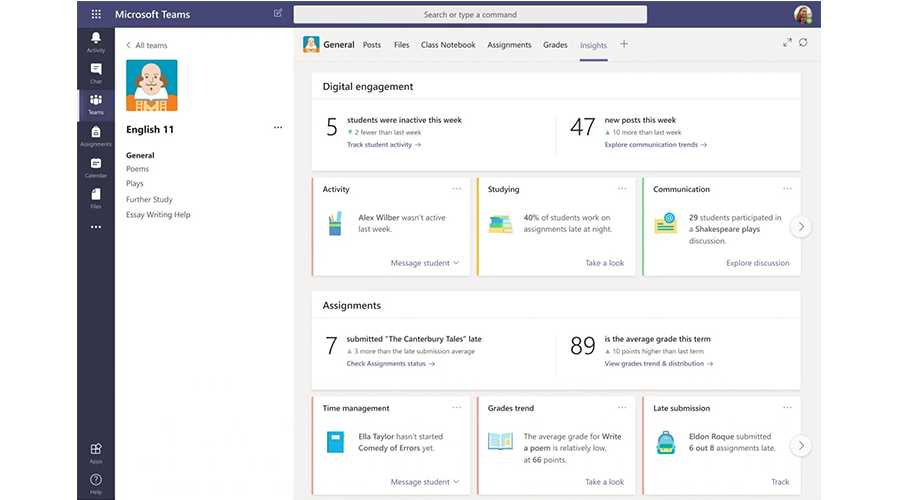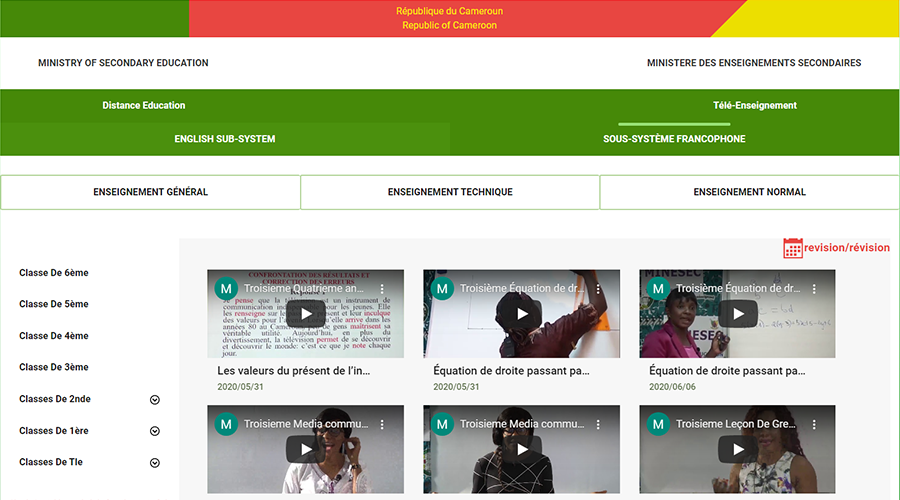
Microsoft Teams for Education is packed with new features to reinvent education
In the context of the end of the new school year, Microsoft announces new features for its Teams for Education collaborative platform. Microsoft is increasing the number of visible participants in a Teams meeting to 49, the company announced in a blog post on Monday. As for the maximum number of participants in a private meeting, it has increased to 250 in Teams, half of the paid offer of rival company Zoom, which can accommodate up to 500 participants at a time.
But the extension of the Teams display from 3 x 3 to 7 x 7, allowing up to 49 participants to be viewed at a time on a single screen, corresponds to the maximum number of participants in a Zoom meeting. This feature will be available in preview this month for Teams users, and to all users in the fall.
This is one of the many features that Microsoft is adding to Teams. The goal is to support its Microsoft for Education products, which the company says are used by more than 150 million students, teachers, school administrators and educators for distance learning. As the technology giant points out, the upcoming new school year will be one of blended learning, and Microsoft must respond to the adoption of technology in distance education.
In addition to the extension of the participant gallery display, Teams for Education offers meeting rooms for students to collaborate in small groups, attendance reports and class overviews for teachers, and a "raise your hand" option for students. Controls are also put in place so that students cannot start class meetings unattended, and there will be limits on who can attend a meeting.
Teams for Education meetings will also include a waiting room, where participants can be checked before being admitted. It is unclear whether these will be desktop-only features.
Hybrid Education
Microsoft says it is adding new features based on what it is hearing from Teams' customers in the education sector, including teachers and industry leaders, many of whom expect to use the technology more than they did before the pandemic. Indeed, 87% of respondents expect to use the technology more frequently after the resumption of teaching in classrooms. And 61 per cent of them plan to continue using a hybrid format (a mix of distance and face-to-face courses) for the next school year.
Teams has been implementing new features at a breakneck pace in an attempt to catch up with Zoom, which has seen huge growth in the first quarter of 2020. In addition to the latest update of the 49-person view to match Zoom, Teams recently included an option for people to add custom background images, and added a real-time noise suppression feature in March, as more and more people began working remotely due to the VIDOC-19 pandemic.

Source: The New Technology Blog






